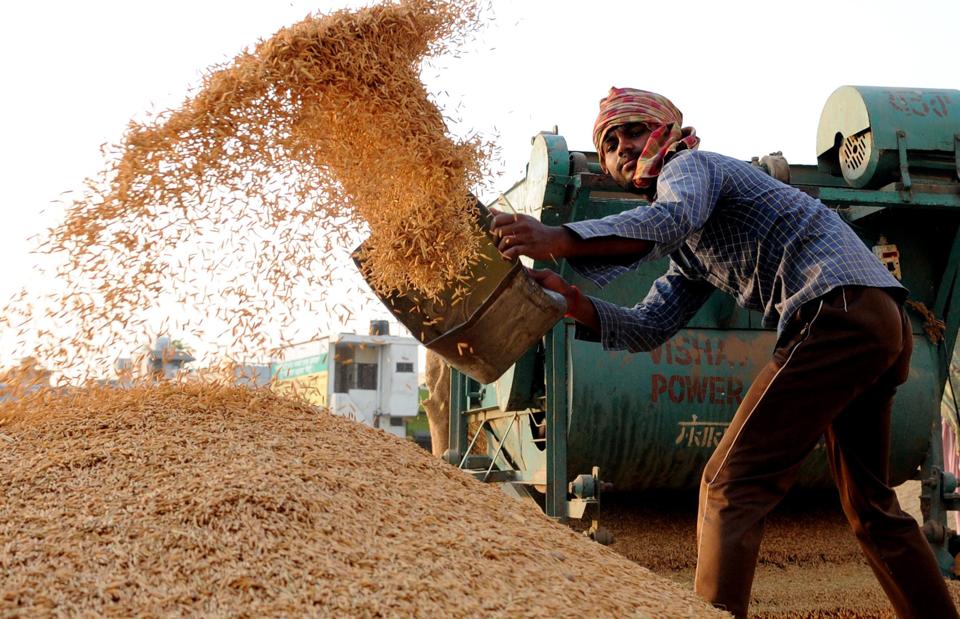India faces the possibility of losing one of its largest markets for basmati rice exports, Iran, following the depletion of rupee reserves held by the West Asian nation in recent weeks, people familiar with the matter said on Wednesday.
The issue has also hit the export of other commodities such as tea and pharmaceuticals to Iran, the people added.
Iran has been paying for imports by using rupee reserves built up from oil exports to India, before New Delhi stopped buying Iranian crude in mid-2019 because of US sanctions on Tehran, Hindustan Times reported.
While the Iranian side has been working on ways to resume basmati rice imports from India, importers in Iran have begun exploring the option of increasing rice procurements from other producers such as Pakistan, Turkey and Thailand, the people said.
Iran imported almost a million tons of the aromatic rice from India in 2022-23, 20.35% of the total basmati exports of 4.5 million tons from the country.
Two persons, who spoke on condition of anonymity, said India-Iran trade has fallen sharply since 2019-20 after New Delhi stopped buying Iranian crude in May 2019. Till then, Iran was among the top three suppliers of energy to the country, along with Saudi Arabia and Iraq.
“It seems Iran has exhausted all its rupee reserves, and thereby trade in local currencies of the respective countries is not possible,” one person said.
A second person, an expert on India’s currency management, said: “As far as I know, there may not be any trade in local currencies [rupee-rial trade].”
Efforts to Shore Up Rupee Reserves
The Iranian side flagged the issue to the Indian side in several recent meetings and offered to resume oil exports as a way to build up rupee reserves held in India, the people said. The Iranian side also pointed to India’s purchase of Russian crude in the face of Western sanctions and contended New Delhi should adopt a similar approach to resuming procurement of Iranian energy, the people added.
Iran has been either the largest or second-largest importer of Indian basmati since 2014-15, according to government data. It was the largest importer of the commodity in 2017-18, 2018-19, 2019-20 and 2021-22. Iran imported 935,567 tons of basmati in 2014-15, and the amount peaked in 2018-19 at 1.4 million tons. The figure for 2022-23 was 998,879 tons. Iran was the fourth largest buyer of Indian tea during 2022-23, with imports worth $68 million.
According to official data, India’s trade with Iran fell sharply in 2019-20, compared to the previous fiscal. Imports, mainly Iranian crude, fell about 90% to $1.4 billion, as compared to $13.53 billion in 2018-19.
The year-on-year fall was not that sharp (less than 5%) for India’s exports to Iran, which were worth $3.37 billion in 2019-20, compared to $3.51 billion in FY19.
India imported about 23.5 million tons of Iranian crude, almost one-tenth of its total requirement in 2018-19, on lucrative terms such as a 60-day credit and other discounts. Besides crude, India mainly imported petroleum products, dye intermediaries and fruits from Iran and primarily exported basmati rice.
Other key Indian exports included tea, sugar and pharmaceuticals.
The trade balance, in favor of Iran before May 2019, gradually shifted in favor of India after it halted crude imports. In 2022-23, India exported goods worth $1.66 billion (mainly basmati rice), but its imports from Iran were worth only $672 million.
In the first month of the current fiscal (April 2023), India exported goods worth $123 million (mainly basmati rice), marking a 1.06% year-on-year growth, but imports contracted by 7.24% to $69 million.
Bilateral Trade Down 20%
Iran’s trade with India fell 19.67% during the first four months of 2023 compared with the same period of last year to stand at $702 million, latest data released by the Indian Ministry of Commerce and Industry show.
Iran’s exports stood at $257 million during the period, registering a 5.32% year-on-year growth.
The exported goods mainly included petroleum products worth $95 million, dye intermediates worth $63 million and fresh fruit worth $57 million.
Iran’s imports from India during the period stood at $445 million, registering a year-on-year fall of 29.36%.
The imports mainly included rice worth $295 million, fresh fruit worth $19 million, tea worth $14 million and organic chemicals worth $12 million.
Bilateral trade grew around 48% in 2022 compared with the year before to stand at $2.5 billion with Iran’s exports standing at $653 million, registering a 59.57% rise compared with the previous year. Iran’s imports from India stood at $1.84 billion last year, registering a year-on-year rise of 43.86%.


